
Internal and Emergency Medicine
Scope & Guideline
Advancing the Frontiers of Internal and Emergency Medicine
Introduction
Aims and Scopes
- Internal Medicine Innovations:
This area covers advancements in the diagnosis, treatment, and management of chronic diseases, highlighting new therapeutic approaches and clinical guidelines. - Emergency Medicine Practices:
Research on protocols, interventions, and outcomes in emergency settings is a core focus, aiming to improve patient care during acute medical events. - Multidisciplinary Approaches:
The journal promotes studies that involve collaboration across various medical specialties to address complex health issues, reflecting a holistic view of patient management. - Public Health and Epidemiology:
The scope includes public health implications of diseases, epidemiological studies, and health policy evaluations, particularly in the context of infectious diseases and emergency responses. - Technological Integration in Healthcare:
There is a consistent emphasis on the application of technology, including telemedicine, artificial intelligence, and point-of-care diagnostics, to enhance clinical outcomes. - Patient Safety and Quality of Care:
Research aimed at improving patient safety, reducing medical errors, and optimizing healthcare delivery processes is a significant area of focus.
Trending and Emerging
- Impact of COVID-19 on Internal Medicine and Emergency Care:
Research related to the COVID-19 pandemic continues to dominate, focusing on its effects on patient management, healthcare systems, and long-term outcomes for survivors. - Telemedicine and Remote Patient Monitoring:
The rapid adoption of telemedicine practices has gained traction, with studies exploring its efficacy, patient adherence, and integration into routine care. - Machine Learning and Artificial Intelligence in Medicine:
There is a growing emphasis on the use of AI and machine learning models to enhance diagnostic accuracy, predict patient outcomes, and optimize treatment plans. - Chronic Disease Management and Multimorbidity:
Research addressing the complexities of managing patients with multiple chronic conditions is trending, reflecting the aging population and the need for integrated care approaches. - Patient-Centered Care and Shared Decision-Making:
Emerging studies emphasize the importance of patient engagement in treatment decisions, highlighting strategies to improve patient satisfaction and adherence. - Environmental and Social Determinants of Health:
There is an increasing focus on how environmental factors and social determinants impact health outcomes, particularly in vulnerable populations.
Declining or Waning
- Traditional Pharmacological Approaches:
There has been a noticeable decrease in studies focusing solely on conventional pharmacotherapy, as the field shifts towards integrated and personalized medicine approaches. - Single-Disease Focus Studies:
Research targeting isolated disease conditions is becoming less prominent, with a growing preference for studies that consider comorbidities and multifactorial health issues. - Basic Science Research:
There seems to be a decline in purely basic science studies that do not directly translate into clinical practice, as the journal increasingly prioritizes translational and applied research. - Historical Perspectives in Medicine:
Papers focusing on historical analysis or perspectives of medical practices are becoming less frequent, indicating a shift towards contemporary and forward-looking research. - Invasive Procedures without Clinical Context:
The journal appears to be moving away from studies that emphasize invasive procedures without a clear clinical context or demonstrated impact on patient outcomes.
Similar Journals
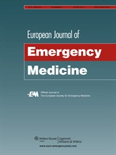
European Journal of Emergency Medicine
Connecting Research with Real-World Emergency SolutionsWelcome to the European Journal of Emergency Medicine, a premier publication dedicated to advancing the field of emergency medicine. Published by Lippincott Williams & Wilkins, this journal serves as a vital resource for researchers, practitioners, and students alike, delivering high-quality, peer-reviewed articles that reflect the latest advancements and best practices in emergency care. With its publication history dating back to 1994 and a projected convergence until 2024, the journal has established itself as an influential voice in the field, boasting a commendable Q2 ranking in Emergency Medicine as of 2023. The Scopus ranking further reinforces its prestige, placing it in the 73rd percentile among its peers. Although currently not an Open Access journal, the European Journal of Emergency Medicine remains committed to making critical knowledge accessible and impactful within the global medical community. We invite you to explore cutting-edge research, innovative studies, and key clinical insights that are essential for improving patient outcomes and advancing emergency medical practices.
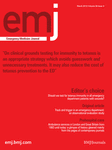
EMERGENCY MEDICINE JOURNAL
Empowering Emergency Care Through Cutting-Edge ResearchEmergency Medicine Journal, published by BMJ Publishing Group in the United Kingdom, stands as a preeminent resource within the realm of emergency and critical care medicine. ISSN 1472-0205 and E-ISSN 1472-0213 reflect its commitment to accessible research, emphasizing open access options to enhance the dissemination of vital medical insights. The journal boasts an impressive categorization, achieving a Q1 ranking in Critical Care and Intensive Care Medicine, Emergency Medicine, and miscellaneous Medicine in 2023. With a focus on high-quality peer-reviewed articles, it serves as an essential platform for sharing innovative research and evidence-based practices that enhance patient care in emergency settings. Ranking 23rd in Emergency Medicine, with a commendable 79th percentile in Scopus rankings, it underscores its position as a leading journal among peers, making it indispensable reading for researchers, professionals, and students alike who seek to stay abreast of evolving trends and practices in emergency medicine and critical care.

Emergencias
Empowering Practitioners with Timely Medical InsightsEmergencias is a prestigious journal in the field of Emergency Medicine, published by the Sociedad Española de Medicina de Urgencias y Emergencias (SEMES). This journal has established itself as a vital platform for sharing cutting-edge research and practical insights, ranking in the top 20 of emergency medicine journals according to Scopus, with a commendable 82nd percentile performance. Since its inception, it has maintained a commitment to advancing knowledge and practice in emergency care, making contributions essential for both researchers and practitioners. The journal features diverse articles covering clinical guidelines, innovative techniques, and case studies, reflective of its importance in guiding timely medical interventions. As an open access publication, it encourages widespread dissemination of knowledge, fostering collaboration and understanding across the global emergency medicine community. Emergencias continues to publish high-quality research until 2024, making significant strides in enhancing emergency healthcare practices in Spain and beyond.
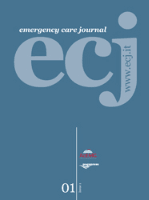
Emergency Care Journal
Connecting Theory and Practice in Emergency MedicineThe Emergency Care Journal is a vital open-access publication dedicated to the field of emergency medical services and nursing, published by PAGEPRESS PUBL. Since its inception in 2005, the journal has aimed to provide a platform for researchers, clinicians, and scholars to share knowledge and advance practices in the critical domain of emergency care. With an ISSN of 1826-9826 and an E-ISSN of 2282-2054, the journal is committed to enhancing accessibility and reaching a global audience. Although its Scopus rankings reflect a competitive landscape, particularly in the ranks of Health Professions and Emergency Medicine, the journal continues to serve as an essential resource for emerging studies and professional insights. Nestled in Italy, the journal seeks to bridge the gap between academic research and real-world application, ultimately improving patient care and outcomes in emergency settings. As it converges into the years 2023 and 2024, Emergency Care Journal stands poised to foster scholarly discussions and innovative research that are crucial to the evolving landscape of emergency medicine.

Deutsches Arzteblatt International
Advancing Medical Knowledge, One Article at a Time.Deutsches Arzteblatt International is a premier journal in the field of medicine, published by DEUTSCHER AERZTE-VERLAG GMBH and based in Germany. This journal serves as a vital platform for the dissemination of high-quality research and clinical advancements, contributing significantly to the medical community's understanding of various health-related issues. With an impressive Scopus ranking placing it in the top 20% of general medicine journals (Rank #129/636, 79th percentile), it is recognized for its rigorous peer-reviewed articles that cover a diverse range of topics in compartmentalized medicine. This publication is available in both print and digital formats, and though it currently does not utilize an Open Access model, its growing recognition in the scientific community, indicated by its Q3 quartile rating and its active publication cycle from 2009 to 2024, makes it an essential resource for researchers, clinicians, and students seeking to stay informed on the latest developments in the field.

Journal of Pediatric Emergency and Intensive Care Medicine
Advancing pediatric healthcare through innovative research.The Journal of Pediatric Emergency and Intensive Care Medicine, published by GALENOS PUBL HOUSE, is an emerging platform dedicated to advancing the fields of pediatric emergency care and intensive medicine. Established in Turkey, this journal strives to provide a comprehensive forum for the dissemination of innovative research and critical findings relevant to pediatric health, particularly within the emergency and intensive care contexts. Although it is currently categorized in Q4 quartiles across key disciplines such as Critical Care, Emergency Medicine, and Pediatrics, the journal seeks to evolve its impact by embracing high-quality submissions that contribute to best practices and effective patient outcomes in pediatric medicine. As an Open Access journal, it promotes the free sharing of knowledge, allowing accessibility for researchers and practitioners around the globe. Authors and readers can expect a rigorous peer-review process as well as a commitment to highlighting the most pressing issues facing pediatric healthcare today. Join us in advancing the dialogue in this vital sector of medical research.
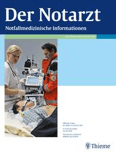
Notarzt
Exploring breakthroughs in critical and emergency care.Notarzt is a well-regarded academic journal published by GEORG THIEME VERLAG KG, focusing on critical care, intensive care medicine, and emergency medicine. With an ISSN of 0177-2309 and an E-ISSN of 1438-8693, this German-based journal has been contributing to the medical field since its inception in 1985. Despite being categorized in the Q4 quartile for both Critical Care and Intensive Care Medicine and Emergency Medicine, Notarzt continues to provide a platform for innovative research, case studies, and developments that inform practitioners and researchers alike. With a publication history spanning significant years such as 1993 and 1999 to 2024, Notarzt is dedicated to improving outcomes in emergency and critical care settings through the dissemination of pivotal findings and comprehensive reviews. Although currently not an Open Access journal, it remains an essential resource for professionals striving to stay abreast of developments in their field.
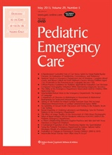
PEDIATRIC EMERGENCY CARE
Empowering Excellence in Pediatric Emergency CarePediatric Emergency Care, published by Lippincott Williams & Wilkins, serves as a vital resource within the fields of Emergency Medicine, Pediatrics, and Child Health. Established in 1985, this journal offers a platform for the dissemination of impactful research, offering critical insights for healthcare professionals dedicated to improving emergency care for children. With an impressive impact factor, it ranks in the Q2 category in Emergency Medicine and Pediatrics, highlighting its significance in advancing clinical practices and outcomes. Although not an open-access journal, it provides extensive access options to ensure the research is available to a broad spectrum of readers. The journal's rigorous standards and commitment to excellence make it an essential tool for researchers, practitioners, and students aiming to stay at the forefront of pediatric emergency care advancements.

Open Access Emergency Medicine
Advancing emergency care through open access research.Open Access Emergency Medicine, published by DOVE MEDICAL PRESS LTD, is a premier journal dedicated to the dynamic fields of Emergency Medicine and Emergency Nursing. With its ISSN 1179-1500, this journal has established a notable presence since its inception as an Open Access platform in 2010, offering unrestricted access to high-quality research and innovative practices in the area. As one of the leading journals in its field, it holds a respectable Q2 ranking in both Emergency Medicine and Emergency Nursing categories as of 2023, reflecting its commitment to advancing knowledge and fostering impactful research. The journal is indexed in prestigious databases with solid Scopus rankings, placing it in the 65th percentile for Emergency Medicine and the 64th percentile for Emergency Nursing, ensuring that contributions reach a diverse audience of researchers, practitioners, and students worldwide. With its focus on contemporary issues, this journal serves as an essential resource for the continual growth and development of emergency health services.
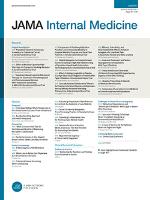
JAMA Internal Medicine
Shaping the Future of Patient Care with Cutting-Edge InsightsJAMA Internal Medicine is a premier scholarly journal published by the American Medical Association, renowned for its rigorous peer-review process and commitment to advancing the field of internal medicine. With an impressive impact factor that positions it in the upper echelon of medical journals, specifically ranked at Q1 in Internal Medicine and holding a remarkable Scopus rank of #2 out of 167, the journal provides a vital platform for original research, reviews, and enlightening discussions that shape clinical practices and policies. As an accessible repository of cutting-edge findings and comprehensive analyses, JAMA Internal Medicine offers both subscription and open access options, ensuring that the latest developments in medicine are available to clinicians, researchers, and the academic community at large. With its focus spanning from 2013 to 2024 and its dedication to high-quality scholarship, the journal serves as an essential resource for those seeking to enhance their understanding of the complexities of internal medicine and improve patient care.